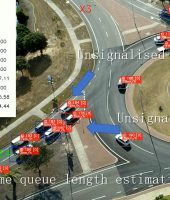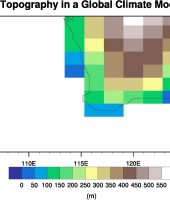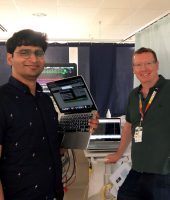Predicting the Ocean to Improve Offshore Designs
Pipelines and subsea structures are widely utilised in offshore construction and offshore oil and gas engineering. The planning of offshore designs, however, are complex, and are based on predictions of oceanic behaviour.
Professor Liang Cheng, from the School of Civil, Environmental, and Mining Engineering at the University of Western Australia, is leading a team of researchers to study hydrodynamic forces and the subsequent impact on offshore structures. Through the use of the Pawsey Supercomputing Centre infrastructure and expertise, Professor Cheng and his research team are able to conduct advanced computational fluid dynamics (CFD) simulations and make significant progress in accurately predicting hydrodynamic forces. Professor Cheng’s research will pave the way to improved structure designs, minimising cost and project risks in marine infrastructure.
The Challenge
The design and construction of offshore infrastructure is an exceptionally challenging task for marine engineers. Hydrodynamic forces make design practice complicated due to the unpredictability of the ocean environment and interactions with infrastructure. Engineers must consider and plan for a host of hydrodynamic influences such as infrastructure instability, seabed scour, green water loading, and ocean turbulence around structures. “From an engineering application point of view, we aim to provide accurate and reliable estimates of extreme hydrodynamic loadings and hydrodynamic responses of offshore structures, from oil and gas pipelines laid on the natural seabed to large-scale floating structures that host storage and processing facilities, through advanced computational fluid (CFD) techniques,” said Professor Cheng. The process of CFD techniques, however, require computationally intensive tasks and calls for a sophisticated system beyond the capacity of standard computing facilities. “The major challenge in our applications is to resolve all scales of flow structures involved in engineering flows,” said Professor Cheng. “This involves significant computational power that can only be provided by a supercomputer.”
The Solution
The world-class facilities at the Pawsey Supercomputing Centre provided the high performance computing required for the processing of algorithms and numerical analysis of CFD practice. “The solution was to use a supercomputer where large scale problems are divided into a number of small jobs that can be processed in parallel by multiprocessors. With the help of the supercomputer, we could solve many problems in a tolerable time frame that was not even possible prior to supercomputers,” said Professor Cheng. Through CFD techniques, Professor Cheng and his team of researchers can understand and predict the hydrodynamic forces that influence flow interactions with offshore structures. “On one hand, the use of CFD techniques removes the needs for conducting costly and time-consuming physical model testing,” said Professor Cheng. “On the other hand, accurate and reliable estimates of hydrodynamic loadings and hydrodynamic responses of offshore structures reduces risks associated with over or under-design of the structures, leading to reduced project costs and probability of project failures.”
Outcome
Through the use of the powerful supercomputer Magnus, Professor Cheng and his research team have made significant progress in predicting marine flow and structure interactions. “The results from this project have [already] been used in large scale projects and upgrading the pipeline design guidelines and are applied directly in engineering designs such as the STABLEpipe Joint Industry Project,” said Professor Cheng. Research findings will continue to be a resource for engineering designs of subsea infrastructure and offshore cyclone evasion strategies. This will significantly improve future designs and planning for marine engineers and reduce costs for oil and gas companies. “The use of supercomputing facilities allows us to gain significant insights to fundamental behaviours of engineering flows and physics responsible for those behaviours. We can develop reliable and affordable engineering solutions to engineering problems,” said Professor Cheng. “This could not be achieved prior to the supercomputing era.”
Project Leader.

Time-averaged flow features of a square pile in steady flow. Bed-shear-stress on the a horizontal plane (z/d = 0.002, where z is the height to the seabed and d is the size of the square).





